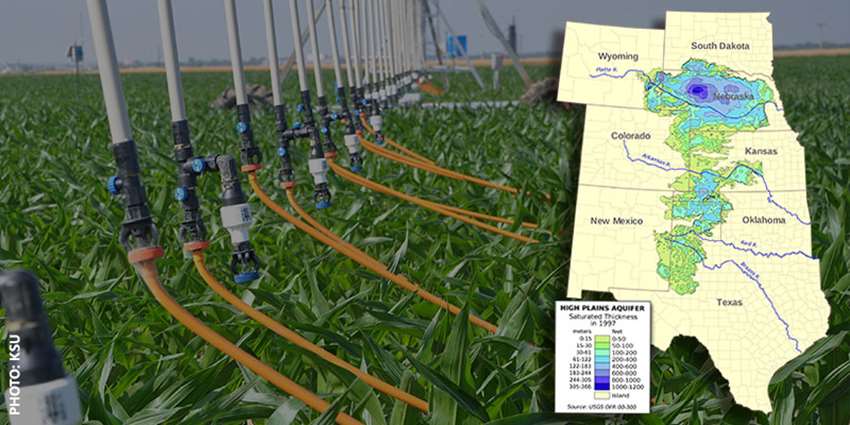Stretching from Texas to South Dakota, the Ogallala Aquifer is the largest underground water reservoir in the United States.
It covers 174,000 square miles in Nebraska, Kansas, Oklahoma, Texas, South Dakota, Wyoming, Colorado and New Mexico. Although the Ogallala is a major source of water for agricultural, municipal and industrial development, it is also being depleted as withdrawals exceed recharge. Multiple research and outreach efforts are working to ensure the sustainable use of these groundwater resources.
The Texas Water Resources Institute (TWRI) is involved in two major federally funded programs that conduct research related to the aquifer and educate landowners and other stakeholders:
The Ogallala Aquifer Program (OAP) is funded by the U.S. Department of Agriculture – Agricultural Research Service (USDA-ARS) and involves a consortium of researchers from ARS, Kansas State University (KSU), Texas A&M AgriLife Research and Extension Service, Texas Tech University (TTU) and West Texas A&M University (WTAMU). OAP recently launched a new website, full of valuable information, presentations and research-based results for interested stakeholders.
“The new OAP website includes resources and research useful for agricultural producers, irrigation professionals, and many other stakeholders in the region,” said Dr. Kevin Wagner, TWRI deputy director and a contributor to Ogallala programs.
Another Ogallala effort, the Ogallala Water Coordinated Agriculture Project (CAP) project, is funded by the USDA – National Institutes for Food and Agriculture and is a multidisciplinary research project focused on keeping Ogallala region agricultural communities productive today and into the future. You can follow the program on Twitter and Facebook.
The project, hosted by Colorado State University, involves the participation of collaborators from eight other institutions: KSU, Oklahoma State University, New Mexico State University, Texas A&M University, TTU, University of Nebraska-Lincoln, WTAMU, and USDA-ARS. TWRI is the Texas lead for the project, which is under USDA-AFRI’s Water for Food Production Systems Challenge Area. You can sign up for the project’s quarterly newsletter to keep up with developments.
Check out these articles for more information on Texas A&M System research related to the Ogallala Aquifer:
- Field day to highlight wheat research impact on food supply
- Water conservation policy effectiveness depends on farmer economics
- Innovative Information: Online dashboard designed to help farmers irrigate just enough, at just the right time
- On the fast track: collaboration expedites adoption of efficient irrigation technologies in the High Plains

